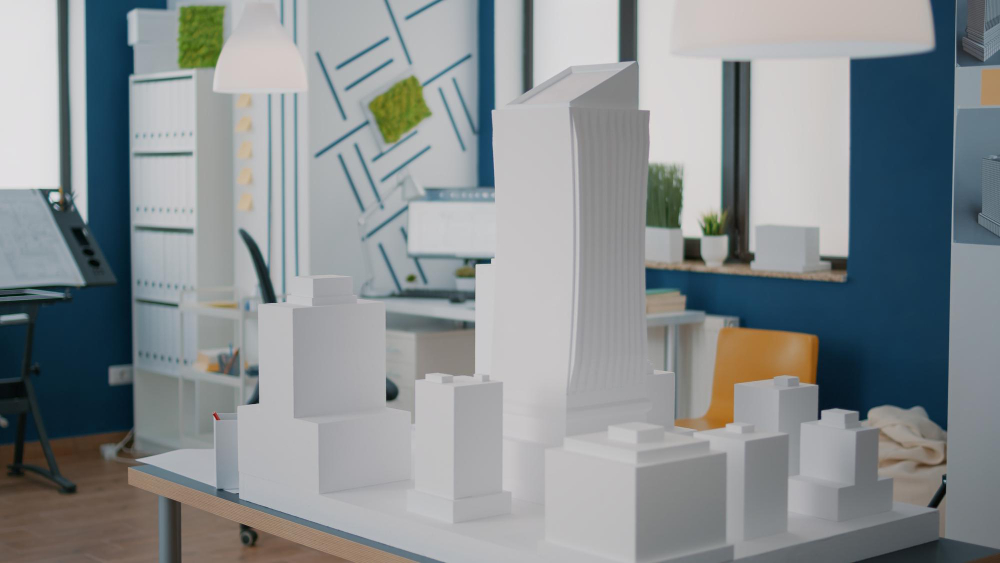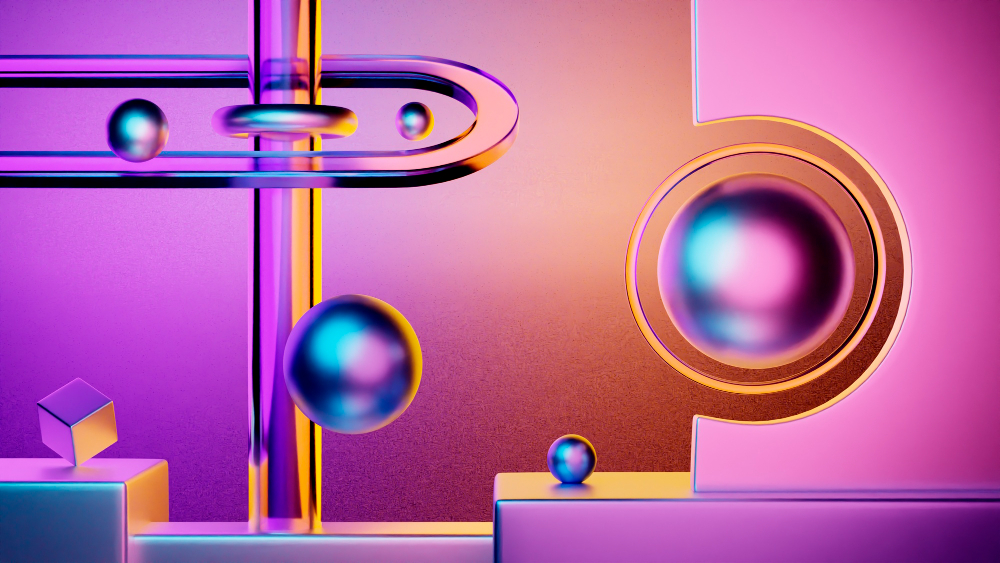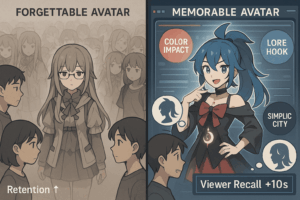3D assets are the newest additions to the world of design. These digital treasures are starting a revolution within the design industry, unveiling limitless possibilities for designers, artists, and businesses. With the ever-growing significance of 3D assets, they are set to shape the future of design by offering a new dimension of creativity and innovation to all those who embrace their potential.
In this blog, we embark on an exploration of the profound impact that 3D assets have contributed on the design landscape. We’ll traverse the applications of these assets, and delve into the intricacies of creating, discovering, and harnessing their potential.
What Are 3D Assets?
Before delving into their applications, it’s essential to establish a fundamental understanding of what 3D assets entail. 3D assets are digital representations of three-dimensional objects or environments. These assets are crafted using specialized software, and their impact extends across a broad spectrum of industries, including gaming, architecture, marketing, and more.
These assets take on a multitude of forms, ranging from intricate architectural models that aid in visualizing complex structures to immersive virtual environments that transport users to captivating digital realms. The exceptional versatility of 3D assets is a game-changer for designers, unlocking the potential to infuse their projects with touch of realism and creativity.
The Versatility of 3D Assets
One of the most exciting aspects of 3D assets is their versatility. Designers across different fields are harnessing their potential in creative ways:
1.Architects:
3D assets allow architects to create lifelike architectural models, providing clients with realistic visualizations of their projects. Architects find 3D assets invaluable for not only client presentations but also for efficient collaboration within design teams. These assets enable architects to explore and experiment with architectural ideas and concepts in a dynamic and interactive manner, fostering innovation and informed decision-making in the design process.
2.Game Developers:
In the gaming industry, 3D assets are instrumental in crafting immersive worlds and lifelike characters that captivate players. Game developers rely on 3D assets as the backbone of immersive gaming experiences, creating intricate game worlds full of stunning visuals and lifelike characters that engage players. These assets serve as the building blocks of virtual environments and game designers to build interesting narratives and interactive adventures.
3.Marketers:
Marketers use 3D assets to create captivating product visuals, changing the way consumers interact with products online. By incorporating these assets, marketers can offer potential customers dynamic, interactive product visuals that go beyond simple images. This revolution in product presentation not only captures the essence and features of the items but also enhances the overall shopping experience, making it more immersive and informative.

Creating Your Own 3D Assets
Creating your own 3D assets is an exciting venture that enables you to bring your unique ideas to life. Here’s a simplified guide to getting started:
1. Select the Right Software:
Begin by choosing 3D modeling software that suits your needs. After that, research the community support and available plugins for your chosen software, as these factors can significantly enhance your workflow and expand your capabilities.
At the same time, take into consideration the hardware requirements of the software, ensuring your computer can handle the demands of 3D modeling without hiccups.
2. Learn the Basics of 3D assets:
Secondly, familiarize yourself with the software through tutorials and guides, mastering the fundamentals of 3D modeling. Begin with introductory courses that cover the user interface, navigation, and basic modeling techniques to build a strong foundation.
In addition, join online forums or communities related to your chosen software to connect with experienced users who can provide valuable tips and guidance.
3. Conceptualize:
Before diving into the software, have a clear idea of what you want to create. Sketch your design to serve as a guide. Develop a comprehensive design brief, including details on the purpose of your 3D asset, target audience, and specific features you want to incorporate. Create multiple concept sketches to explore different design possibilities, ensuring you have a well-defined vision before starting the modeling process.
4. Modeling:
Use the software to craft your 3D object or environment. Start with basic shapes and gradually add complexity as your skills grow. Begin with simple geometric structures to establish the core of your 3D asset and gradually add details as you progress. Experiment with polygonal and subdivision surface modeling techniques, adapting your approach to suit the specific requirements of your project.
5. Texturing and Shading:
Enhance your 3D asset by applying textures and shaders, adding depth and detail to your creation. Invest time in creating or sourcing high-quality textures, paying close attention to aspects like color, bump, specular, and normal maps for a realistic look. Understand the principles of shading and materials to achieve the desired surface appearance, whether it’s matte, glossy, metallic, or translucent.
6. Lighting and Rendering:
Experiment with different lighting setups to achieve the desired atmosphere. Once satisfied, render your 3D asset. Learn about various lighting types, such as point, directional, and spotlights, and their impact on the mood and aesthetics of your scene. Explore the rendering settings within your software to optimize the final output, taking into account factors like resolution, anti-aliasing, and depth of field.
7. Testing:
Ensure your 3D asset functions as intended in its target environment. Conduct rigorous testing, simulating real-world conditions to assess how your 3D asset behaves and interacts in different scenarios. Seek feedback from peers or mentors, making necessary adjustments and refinements to address any issues or improvements identified during the testing phase.
Free 3D Assets: Where to Find Them
Creating 3D assets from scratch is rewarding, but sometimes you need resources to expedite projects or provide a starting point. If you’re looking for free 3D assets, there are several sources to explore:
1. Online 3D Asset Libraries:
Some websites offer extensive collections of free 3D models and assets, spanning various categories for your convenience. Online 3D Asset Libraries provide a wide range of resources for designers, allowing them to easily access a diverse range of 3D models and assets, making the creative process more efficient and accessible.
2. Open Source Communities:
Communities serve as vibrant hubs where designers come together to share their creations. These platforms not only host a wealth of free 3D assets but also promote collaboration and the spirit of open-source sharing, fostering a sense of community among digital artists and creators. These assets are often available under open-source licenses, encouraging adaptation, remixing, and innovation in the world of 3D design.
3. 3D Software Marketplaces:
In the ever-evolving world of 3D modeling, some software platforms go a step further by featuring specialized marketplaces. These digital marketplaces offer an array of assets, ranging from characters and props to intricate environments, often available for free or at a nominal cost. These platforms not only provide convenient access to a wide range of community-created assets but also contribute to the vibrant ecosystem of 3D design by enabling designers to easily integrate these resources into their projects, saving time and effort.

The Power of 3D Assets in E-commerce
E-commerce is another arena where 3D assets are bringing changes. They allow online shoppers to engage with products in ways previously unimaginable. Instead of static 2D images, consumers can now interact with 3D models of products, examining every detail. This immersive experience not only enhances shopping but also reduces the likelihood of returns, as customers have a clearer understanding of what they’re purchasing. The transformative potential of 3D assets in e-commerce extends beyond enhanced product visualization. These assets enable businesses to offer augmented reality (AR) experiences, allowing customers to virtually place products in their own living spaces before making a purchase decision. Additionally, the interactive nature of 3D assets in e-commerce leads to increased customer engagement and dwell time on product pages. This can ultimately boost conversion rates and sales. As technology continues to advance, the collaboration between 3D assets and e-commerce promises to redefine the way consumers shop online, ushering in an era of more informed, immersive, and enjoyable shopping experiences.
Crafting 3D Game Assets
Creating 3D assets for video games is a specialized skill set. Here’s a guide to get you started:
1. Understand Game Development:
Firstly, to embark on the journey of crafting 3D game assets, it’s essential to familiarize yourself with the intricate world of game development. This entails gaining a comprehensive understanding of various aspects, including the gaming platforms you aim to target, the game engines you intend to work with, and the specific game genres you aspire to create assets for. These foundational insights serve as the bedrock for successful 3D game asset creation, allowing you to tailor your work to the unique demands of the gaming industry.
2. Concept Art:
Secondly, the creative journey of crafting 3D game assets often starts with conceptualization. Concept art serves as the visual blueprint, allowing you to breathe life into characters, props, or immersive game environments. Through concept art, you can crystallize your ideas, refine designs, and set the artistic direction for your 3D assets. It’s the initial canvas on which the vibrant tapestry of your game’s visual identity begins to unfold, guiding your 3D modeling and asset creation process.
3. Modeling and Animation:
Additionally, utilizing 3D modeling software is the pivotal next step in the process of crafting game assets. This phase involves the meticulous creation of 3D objects, characters, or environments, with a keen focus on optimizing them for real-time rendering—a fundamental requirement for seamless gameplay experiences.
Moreover, delving into animation techniques is paramount in the context of game development. Learning how to animate your 3D assets breathes vitality into characters and objects, enriching the interactive dimension of your games. As a game asset creator, mastering animation adds depth and dynamism to your creations, ensuring they seamlessly integrate into the gaming environment.
4. Texturing:
The art of 3D asset creation extends beyond shape and structure. It involves the careful application of textures and materials to align with the game’s distinct visual style and the capabilities of the game engine.
Optimization stands as an important consideration in this stage. Striking a balance between visual richness and performance efficiency is crucial. By fine-tuning textures and materials, you ensure your 3D assets not only look appealing but also run smoothly within the game, providing players with an immersive and uninterrupted experience.
5. Integration:
The journey of 3D asset creation culminates in integration, where your meticulously crafted assets are brought into the game engine. This phase is critical for ensuring that your assets seamlessly interact with the game’s underlying code and mechanics.
Here, it’s essential to finesse the technical aspects of your assets, such as rigging characters for animation, creating collision meshes for objects, and aligning the assets with the gameplay mechanics. A harmonious integration guarantees that your 3D assets not only look fantastic but also function flawlessly within the gaming environment, contributing to a cohesive and enjoyable player experience.
6. Testing and Iteration:
The journey of 3D asset development is an iterative one. It’s crucial to subject your assets to continuous testing within the game environment. This iterative process involves rigorous evaluation, identifying areas for improvement, and making necessary adjustments.
Collaboration is key during this phase. Working closely with game designers and developers allows you to fine-tune your assets in alignment with the overall game’s vision. Moreover, feedback and iteration ensure that your 3D assets evolve, optimizing their performance, visual appeal, and functionality in a way that enhances the overall gaming experience.

The Future Landscape of Design
The world of design is continuously evolving, and as technology advances, so does the role of 3D assets. They are set to continue transforming the design industry. 3D assets are unlocking new creative possibilities, and reshaping the way we perceive and interact with the world.
As we look to the future, it’s clear that the influence of 3D assets is only going to grow. Embracing this trend will position you at the forefront of the design industry. Finally, the future of design is undoubtedly 3D. It’s brimming with opportunities for those willing to explore this exciting and transformative field.
Conclusion
The advent of 3D assets marks a significant turning point in the dynamic design industry. These digital marvels are not merely influencing but revolutionizing the design industry. Their potential to redefine creativity, reshape realism, and unlock new dimensions of innovation is boundless. The impact of 3D assets isn’t limited to design alone; they’ve ushered in a new era of e-commerce . They are offering interactive and immersive shopping experiences that empower consumers with a clearer understanding of their purchases. As we gaze into the future, the landscape of design is undeniably 3D. These assets are set to redefine the creative world, and embracing this trend positions individuals and businesses at the forefront of the design industry. The opportunities within the 3D realm are vast, promising a future that’s as immersive as it is transformative. The future of design is 3D, and it’s teeming with opportunities for those eager to explore this thrilling field.



